Every year, tens of thousands of workers across Australia develop a painful, itchy rash on their hands, forearms, or face - not from allergies, not from bad hygiene, but from something they touch every day at work. This isn’t just a minor annoyance. It’s occupational contact dermatitis, and it’s one of the most common work-related skin diseases in the country. If you’ve ever had red, cracked, peeling skin after a shift, especially if it keeps coming back, you’re not alone - and you’re not imagining it.
What Exactly Is Occupational Contact Dermatitis?
Occupational contact dermatitis is a skin inflammation caused by direct contact with substances in the workplace. It’s not contagious. It’s not caused by stress. It’s a physical reaction between your skin and something in your environment - often chemicals, cleaning agents, solvents, metals, or even water if you’re washing your hands too often.
There are two main types. The first is irritant contact dermatitis, which makes up about 80% of cases. This happens when a substance breaks down your skin’s natural barrier. Think: hand sanitizer used 50 times a day, cement dust, grease, or bleach. The second type is allergic contact dermatitis, which is less common but more serious. This is when your immune system reacts to something like nickel, latex, or certain fragrances in soaps or gloves. Once you’re allergic, even tiny amounts can trigger a flare-up.
It’s not just construction workers or cleaners. Nurses, hairdressers, mechanics, bakers, electricians, and even office workers using wet wipes or hand creams with hidden allergens can get it. In Australia, the highest rates are seen in trades, healthcare, and food services - places where skin is constantly exposed to moisture, friction, or chemicals.
Who’s Most at Risk?
Some jobs carry higher risks simply because of what you’re touching. Here are the top five high-risk industries in Australia based on WorkSafe data:
- Healthcare workers - Frequent handwashing, latex gloves, disinfectants, and antiseptics wear down skin over time. Studies show up to 40% of nurses develop hand dermatitis within their first five years.
- Construction and trades - Cement, paint, solvents, and adhesives are common irritants. Cement alone contains chromium, a known allergen that can cause lifelong sensitivity.
- Food service and catering - Constant exposure to water, detergents, oils, and spices like garlic or chili can break down skin. Dishwashers have one of the highest rates of hand eczema.
- Beauty and hairdressing - Hair dyes, perming solutions, and nail products contain chemicals like paraphenylenediamine (PPD) and acrylates, which are frequent allergens.
- Manufacturing and cleaning - Industrial cleaners, degreasers, and solvents like acetone or toluene strip natural oils from skin, leading to chronic dryness and cracking.
It’s not just about the job - it’s about how you do it. People who wash their hands more than 20 times a day, wear damp gloves for hours, or skip moisturizing after work are at much higher risk. Skin doesn’t heal overnight. If you’re not protecting it, it breaks down slowly - until one day, it just won’t recover.
What Does It Look Like?
It’s easy to mistake occupational dermatitis for dry skin or a simple rash. But here’s how to tell the difference:
- It starts in areas that touch work materials - fingers, palms, wrists, forearms.
- The skin turns red, feels tight, and may burn or sting.
- It becomes dry, flaky, and cracked - sometimes bleeding.
- It doesn’t improve with regular moisturizer or over-the-counter creams.
- It gets worse during work weeks and improves on days off.
If you notice this pattern, especially if it’s been going on for more than two weeks, it’s not just dry skin. It’s your body telling you something at work is damaging your skin. Ignoring it makes it worse. Delayed treatment can lead to chronic eczema, infections, or even time off work.

How to Prevent It - Practical Steps That Work
Prevention isn’t about fancy gear or expensive creams. It’s about simple, consistent habits. Here’s what actually works:
- Wear the right gloves - Not all gloves are equal. Latex gloves can trigger allergies. Nitrile is safer for most people, but even nitrile can degrade if exposed to solvents. Always check the glove’s chemical resistance rating. And never wear gloves if they’re damp inside - sweat trapped under gloves is a major cause of irritation.
- Change gloves regularly - If you’re washing hands or handling chemicals, change gloves every hour or sooner if they’re wet or torn. Reusing damp gloves is like wearing a wet sponge on your skin all day.
- Wash hands properly - and moisturize immediately - Use lukewarm water and a gentle, fragrance-free soap. Don’t scrub. Pat dry - don’t rub. Within three minutes of washing, apply a thick, oil-based moisturizer. Petroleum jelly or ceramide creams work best. Don’t wait until your hands feel dry - that’s too late.
- Use barrier creams wisely - These aren’t magic shields. They work best when applied before a shift, not after. Look for products with dimethicone or lanolin. Avoid creams with alcohol or fragrances - they can make things worse.
- Minimize direct contact - Use tools instead of your hands when possible. Use tongs for cleaning, wear sleeves, or install automatic dispensers for soaps and chemicals. Every time you avoid touching a harsh substance, you give your skin a break.
Employers have a legal duty under Australian Work Health and Safety laws to reduce exposure to skin hazards. If your workplace doesn’t provide gloves, moisturizers, or training on skin protection, ask for it. You’re not being difficult - you’re protecting your ability to work.
What to Do If You Already Have It
If you’re already dealing with a rash, stop trying to tough it out. Here’s what to do next:
- See a dermatologist - Not your GP. A skin specialist can do a patch test to identify specific allergens. This is the only way to know what’s causing your reaction. Once you know, you can avoid it.
- Stop using irritants - Even if you think you’ve been careful, you might be using a hand cream, soap, or cleaning product that’s making it worse. Switch to hypoallergenic, fragrance-free products.
- Use prescribed treatments - Topical corticosteroids are often needed to calm inflammation. In severe cases, doctors may prescribe calcineurin inhibitors like tacrolimus. Don’t avoid steroids out of fear - short-term use under medical supervision is safe and effective.
- Take time off if needed - If your skin is cracked and bleeding, working through it won’t help. A few days off to heal can save you weeks of pain and lost productivity.
Many people wait months or even years before seeking help. By then, the skin has thickened, the cracks have deepened, and the condition becomes harder to treat. Early action is the difference between a temporary setback and a chronic problem that follows you for life.

Why This Matters Beyond the Itch
Occupational contact dermatitis isn’t just a skin issue. It’s a career issue. In Australia, it’s the second most common cause of work-related illness after musculoskeletal disorders. Workers often reduce hours, switch jobs, or leave the workforce entirely because their skin won’t heal. The cost to the economy? Over $200 million a year in lost productivity and compensation claims.
But here’s the good news: most cases are preventable. With the right training, proper equipment, and consistent habits, you can work without damaging your skin. It’s not about being perfect. It’s about being smart - washing and moisturizing every day, wearing the right gloves, and speaking up when something doesn’t feel right.
Your skin is your largest organ. It protects you from the world. Don’t let your job break it down. Protect it like you protect your tools - because if you don’t, you’ll pay for it every single day.
Can occupational contact dermatitis go away on its own?
Sometimes, if the trigger is removed early - like switching to non-latex gloves or reducing handwashing frequency - mild cases can improve within a few weeks. But if you keep being exposed to the irritant or allergen, it won’t go away. In fact, it often gets worse over time. Chronic dermatitis can lead to permanent skin changes, like thickening or cracking, that are harder to treat. Early action is key.
Are natural or organic products safer for my skin at work?
Not necessarily. Many people assume ‘natural’ means safe, but that’s not true. Essential oils, plant extracts, and herbal soaps can be just as irritating - or even more allergenic - than synthetic chemicals. Tea tree oil, for example, is a common cause of allergic contact dermatitis in hairdressers and cleaners. Always check ingredient lists and avoid anything that causes redness or itching, no matter how it’s labeled.
Can I still work if I have occupational contact dermatitis?
Yes, but only if you take steps to protect your skin. Many people continue working with mild cases by using gloves, moisturizers, and avoiding triggers. However, if your skin is cracked, bleeding, or infected, you should take time off to heal. Continuing to work with damaged skin increases the risk of infection and makes recovery much slower. Your employer is required to offer reasonable adjustments - like changing tasks or providing protective gear - to help you stay safe.
What’s the difference between hand eczema and contact dermatitis?
Hand eczema is a general term for inflamed, dry, itchy skin on the hands. Occupational contact dermatitis is a specific type of hand eczema caused by workplace exposure. All occupational contact dermatitis is hand eczema, but not all hand eczema is caused by work. Other causes include genetics, stress, or home exposures. The key clue? If your rash improves on weekends or holidays, work is likely the cause.
Is occupational contact dermatitis covered by workers’ compensation in Australia?
Yes, if it’s proven to be caused by your job. You’ll need documentation from a dermatologist, a history of exposure at work, and evidence that the condition started or worsened because of your occupation. Many claims are denied because people wait too long to get a diagnosis or don’t link their symptoms to specific workplace triggers. The sooner you see a specialist and report it to your employer, the better your chances.
Next Steps: What You Can Do Today
Don’t wait for your skin to get worse. Start today:
- Check your current hand care routine. Are you using soap with fragrance? Are you moisturizing after every wash?
- Look at your gloves. Are they the right type for your job? Are they dry before you put them on?
- Write down when your rash flares up - what were you doing? What did you touch?
- Ask your supervisor for access to protective creams and gloves if you don’t already have them.
- Book a skin check with a dermatologist if you’ve had symptoms for more than two weeks.
Occupational contact dermatitis doesn’t have to be part of your job. With the right knowledge and habits, you can protect your skin - and keep working without pain.




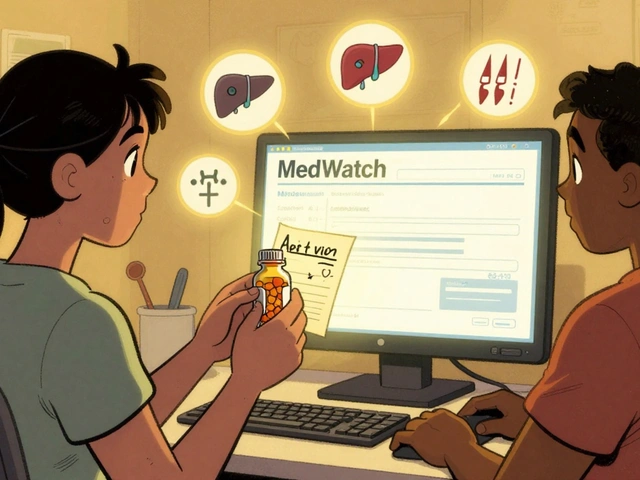
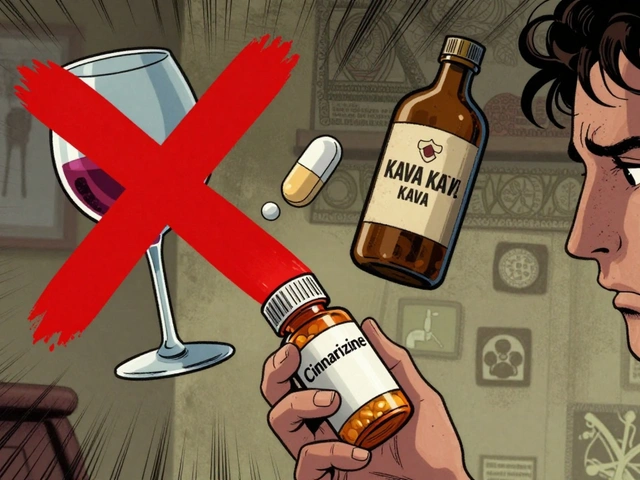
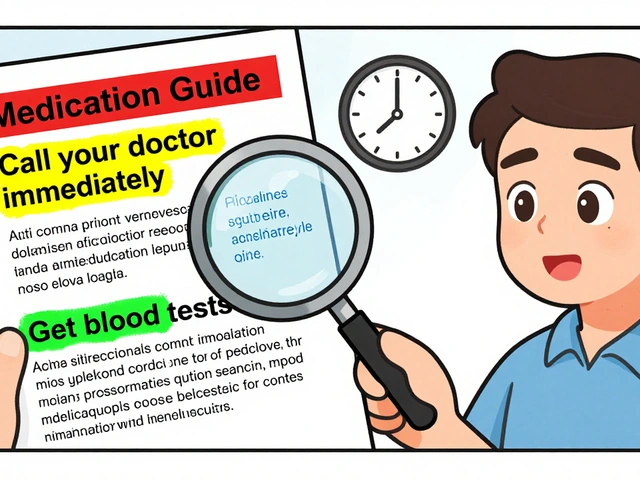
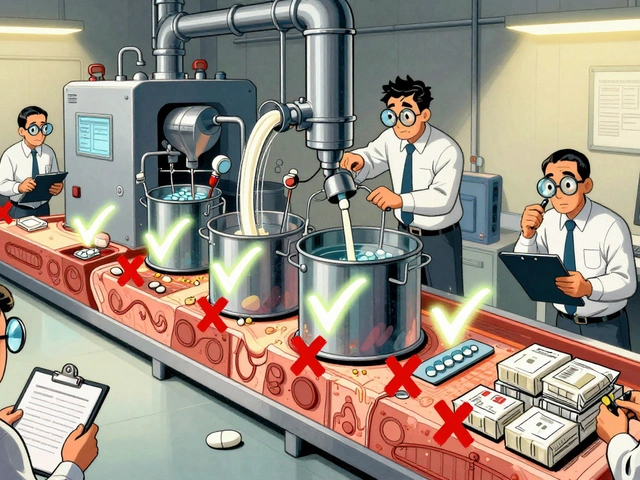
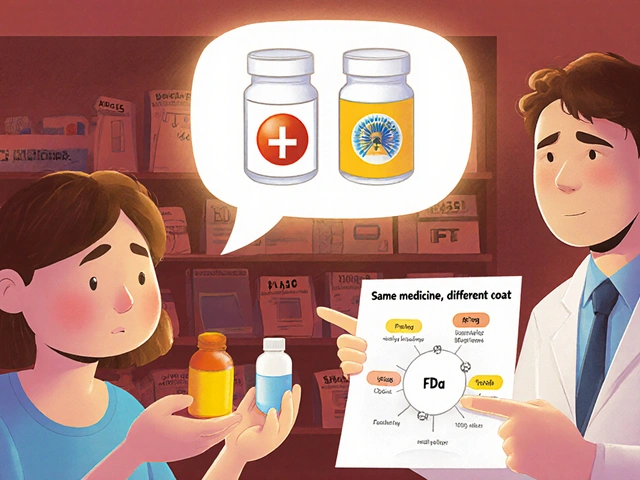

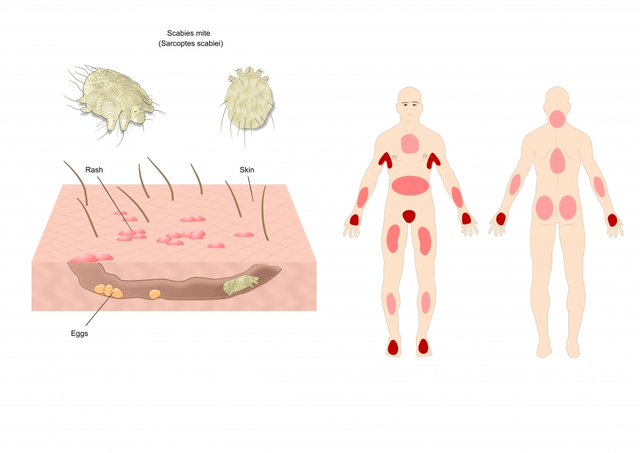


11 Comments
I used to work in a hospital and didn't realize my hands were cracking from all the hand sanitizer until I couldn't grip a pen without pain. It took me two years to connect it to work. Once I started moisturizing right after every wash and switched to nitrile gloves? Life changed. No more weekend flare-ups. Simple stuff, but nobody tells you this until it's too late.
Also, please stop using scented hand creams at work. I know they smell nice, but that 'lavender'? Probably PPD. I've seen it ruin careers.
Look, I’ve been a mechanic for 22 years. I’ve seen guys quit because their hands looked like they’d been dipped in acid. But here’s the thing - most of them didn’t wear gloves because they said it ‘reduced feel.’ Bullshit. You don’t need to feel the bolt head to tighten it - you need to feel your skin intact at 60.
Start with a good barrier cream before your shift. Use nitrile gloves under cotton liners if your hands sweat. Wash with pH-balanced soap, not dish detergent. Moisturize within three minutes, every single time. It’s not optional. It’s survival. And if your boss won’t provide the gear? Print this post and hand it to HR. You’re not asking for a favor - you’re asking for your right to work without pain.
They don’t want you to know this, but occupational dermatitis is a corporate conspiracy. Big Pharma and glove manufacturers are in cahoots. Why? Because if workers actually protected their skin, they’d stop needing expensive creams and patch tests. They’d stop going to dermatologists. And then where’s the profit?
Meanwhile, the government keeps pushing ‘hygiene’ while letting factories dump chemicals in the air. They want you sick. They want you dependent. They want you too tired to protest. This isn’t about skin - it’s about control. Break the cycle. Stop washing your hands so much. Let your skin breathe. Natural immunity > corporate solutions.
The assertion that occupational contact dermatitis is preventable through adherence to basic hygiene protocols is empirically sound, as corroborated by multiple peer-reviewed studies from the Australasian College of Dermatologists. However, the omission of longitudinal data regarding compliance rates among blue-collar workers in non-unionized environments renders the proposed solutions largely aspirational. Furthermore, the legal obligations outlined under Work Health and Safety legislation are frequently unenforced due to resource constraints within regulatory bodies. Consequently, while the preventive measures enumerated are technically correct, their practical efficacy remains contingent upon systemic reform, not individual behavior modification.
I had this for 4 years and no one believed me. I kept saying ‘it’s the job’ and they said ‘you’re just sensitive.’ I got told I was ‘overreacting’ by my own manager. Then one day my hands bled through my gloves during a shift and my boss said ‘just put some lotion on.’
That’s when I quit. No warning. No notice. Just walked out. I don’t care if I never work again. My skin matters more than their shift schedule. And if you’re still working with cracked hands? You’re being gaslit. Stop. Now.
For those asking about natural products - yes, they can be worse. Tea tree oil, coconut oil, shea butter, even aloe vera - all can be allergens. Patch testing isn’t optional. I’m a dermatology nurse and I’ve seen patients develop allergies to ‘organic’ soaps that contain lavender, chamomile, or citrus extracts. These are not benign. Your skin doesn’t care if it’s ‘natural’ - it reacts to molecules.
Also, barrier creams? They’re only effective if applied before exposure. Applying them after you’ve already washed 15 times? That’s like putting on a helmet after you’ve been hit by a truck. Timing matters. Use them like sunscreen - proactive, not reactive.
The epidemiological burden of occupational contact dermatitis is disproportionately concentrated in low-skill, high-exposure sectors where ergonomic and dermatological risk mitigation is systematically underfunded. The prevalence of irritant dermatitis in food service and healthcare correlates directly with the commodification of labor and the erosion of occupational health infrastructure. The so-called ‘prevention strategies’ are merely band-aid interventions designed to preserve productivity, not protect workers. True mitigation requires structural re-engineering of workflows - not just gloves and moisturizer. Until then, we are merely managing symptoms of systemic neglect.
Okay but like… I work in an office and I use those wet wipes for my keyboard and now my fingers are dry? Is that a thing? I thought it was just winter. But now I’m reading this and I think… maybe? I’ve been using those wipes for years. And I never moisturize after. Should I be worried? I don’t want to be one of those people with cracked hands. 😅
Also, can I use Vaseline? I have a big tub at home. Is that okay? I don’t want to buy fancy stuff.
I’m a hairdresser in Delhi and this post hit me like a ton of bricks. We use dyes every day. No gloves. No breaks. Boss says ‘if you can’t handle it, find another job.’ I had a rash for 3 years. Thought it was just dry skin. Then I got a patch test - turned out I’m allergic to PPD. I switched to henna-based dyes, started wearing gloves, and moisturized after every client. My hands are healing.
To every worker out there: you’re not weak. Your skin isn’t ‘too sensitive.’ It’s your body screaming for help. Speak up. Ask for gloves. Ask for training. You deserve to work without pain. And if no one listens? Find someone who will. I’m here if you need help finding resources.
There’s a quiet tragedy here that goes beyond skin. We’ve turned our bodies into tools - disposable, replaceable, expendable. We don’t think about the cost of labor because we’re taught to admire endurance, not protect ourselves. But your skin isn’t just tissue - it’s your interface with the world. It’s your first line of defense, your sensory map, your boundary. When you let it erode, you’re not just losing a rash - you’re losing part of your humanity.
Protecting it isn’t weakness. It’s the most radical act of self-respect left in a world that wants you to burn out quietly.
Bro. I work in a kitchen and I got this so bad I couldn’t hold a spatula. I tried every ‘natural’ cream, organic soap, tea tree oil, you name it. Nothing. Then I just used plain Vaseline and nitrile gloves. Like, the cheapo ones from Walmart. And guess what? My hands are fine now. Stop overcomplicating it. It’s not a cult. It’s not a conspiracy. It’s just… wash, dry, slap on grease, wear gloves. Done.
Also, if your boss says ‘we don’t have budget’ - tell them I did it with $5 of Vaseline and now I’m still working. 🤝